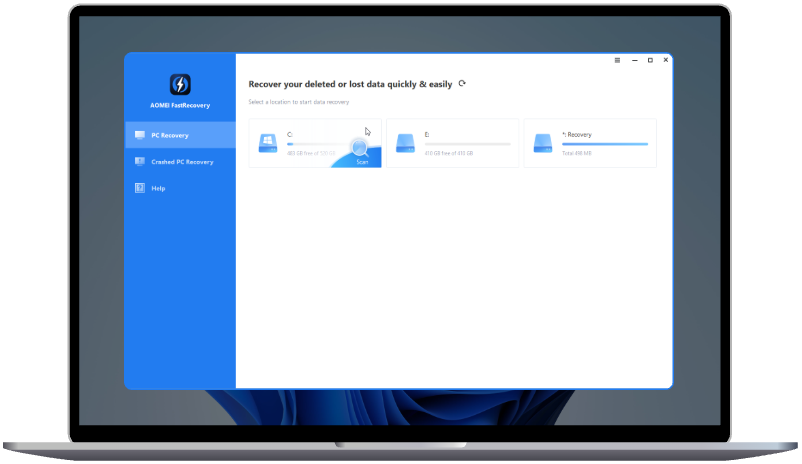What Is a Logical Partition and How Does It Work?
Delve into the realm of logical partitions to unravel the essence of what is a logical partition truly entails and gain insights into its significance and operation within the realm of contemporary computing environments.
In the realm of computing systems, the concept of logical partitions plays a crucial role in optimizing resources and enhancing operational efficiency. Understanding what is a logical partition and how it functions is essential for IT professionals and enthusiasts alike. In this comprehensive guide, we will delve into the intricacies of logical partitions, exploring their definition, practical applications, and operational mechanisms.
Overview of Logical Partitions
Logical partitions, also known as logical volumes, are virtual divisions within a physical storage device that allow for the segmentation of data and resources. The primary purpose of logical partitions is to enable the efficient utilization of storage space and processing power, thereby enhancing system performance and flexibility.
The Problem with Traditional Storage Configurations
Traditional storage configurations often face limitations in terms of scalability, flexibility, and resource optimization. Without the ability to partition data logically, organizations may encounter challenges in managing and allocating storage resources effectively. Additionally, the lack of isolation between data sets can result in security vulnerabilities and performance bottlenecks.
Causes of Storage Management Issues
1. **Inefficient Resource Allocation**: Without logical partitions, storage resources may be underutilized or unevenly distributed across applications and data sets.
2. **Data Isolation Challenges**: Mixing data from different applications or users without proper separation can lead to security breaches and data corruption.
3. **Limited Scalability**: Traditional storage setups may struggle to accommodate the growing demands of modern workloads and applications, resulting in performance degradation.
Solutions for Optimizing Logical Partitions
Solution 1: Define Clear Partitioning Strategies
1. **Assess Data Requirements**: Identify the types of data that require segregation and determine the appropriate partitioning scheme.
2. **Establish Partition Size Guidelines**: Set guidelines for partition sizes based on the amount of data and performance requirements.
3. **Implement Consistent Naming Conventions**: Develop a naming convention for logical partitions to maintain organization and ease of management.
4. **Monitor and Adjust as Needed**: Continuously monitor partition usage and adjust configurations based on changing data needs.
5. **Document Partitioning Policies**: Document partitioning policies and procedures for future reference and compliance.
Solution 2: Utilize Virtualization Technology
1. **Implement Virtual Disk Mapping**: Use virtualization software to map logical partitions to physical storage devices.
2. **Leverage Hypervisor Capabilities**: Harness the capabilities of hypervisors to manage and allocate resources across logical partitions.
3. **Enable Dynamic Resource Allocation**: Enable dynamic allocation of resources to logical partitions based on workload demands.
4. **Utilize Snapshot and Cloning Features**: Take advantage of snapshot and cloning features to create backups and streamline data management.
5. **Integrate with Cloud Services**: Integrate logical partitions with cloud services for increased scalability and disaster recovery capabilities.
Solution 3: Enhance Security and Data Protection Measures
1. **Implement Access Controls**: Enforce access controls to restrict unauthorized access to data within logical partitions.
2. **Enable Encryption**: Encrypt data within logical partitions to protect sensitive information from breaches and cyber threats.
3. **Regularly Backup Data**: Perform regular backups of data stored in logical partitions to ensure recoverability in case of data loss.
4. **Conduct Security Audits**: Conduct periodic security audits to identify vulnerabilities and strengthen protection measures.
5. **Train Staff on Data Security**: Educate employees on data security best practices to prevent human errors and security breaches.
FAQ
Q1: What is the difference between a physical partition and a logical partition?
A: A physical partition refers to the physical division of a storage device, while a logical partition is a virtual division created for organizational and management purposes.
Q2: Can logical partitions be resized?
A: Yes, logical partitions can be resized dynamically to accommodate changing data storage requirements without disrupting operations.
Q3: How do logical partitions improve storage efficiency?
A: Logical partitions enable the isolation of data sets, optimizing resource allocation and enhancing data access and management efficiency.
Q4: Are logical partitions only used in storage devices?
A: No, logical partitions can also be applied to memory, network resources, and computational processing units for resource management and optimization.
Q5: What role do logical partitions play in virtualization environments?
A: In virtualization environments, logical partitions enable the segmentation of resources to create isolated virtual machines and enhance system performance and security.
Key Tech Terms
1. **Logical Volume Manager (LVM)**: A software tool that facilitates the management of logical partitions on Linux systems.
2. **Partition Table**: A data structure that defines the layout of partitions on a storage device and tracks disk utilization.
3. **RAID Levels**: Redundant Array of Independent Disks (RAID) levels determine how data is distributed and protected across multiple storage devices.
4. **Thin Provisioning**: A storage management technique that allows for the dynamic allocation of storage space based on actual usage.
5. **LUN (Logical Unit Number)**: A unique identifier assigned to logical volumes or partitions in storage area networks for addressing and access control purposes.
Conclusion
In conclusion, understanding what is a logical partition and how it works is crucial for maximizing the efficiency and effectiveness of storage and resource management in computing environments. By implementing clear partitioning strategies, utilizing virtualization technology, and enhancing security measures, organizations can optimize resource allocation, improve data access and protection, and streamline system performance. Embracing logical partitions as a fundamental component of modern IT infrastructure empowers businesses to adapt to evolving data needs and challenges with agility and resilience.

